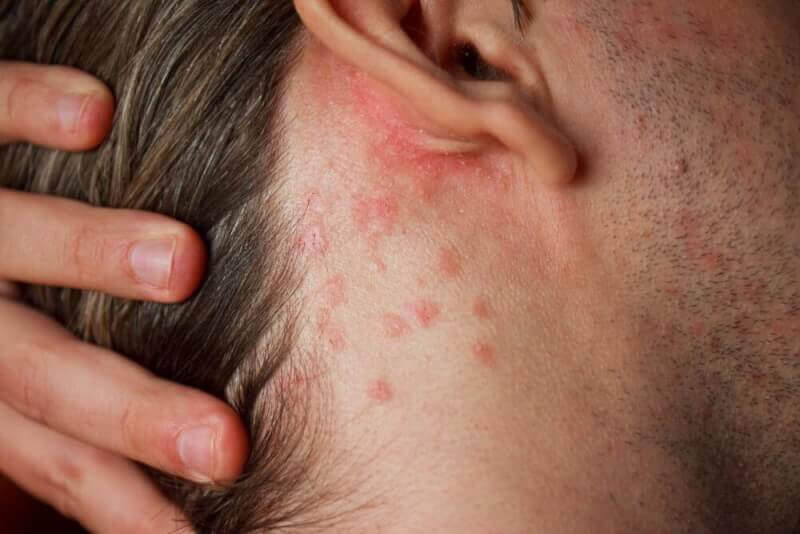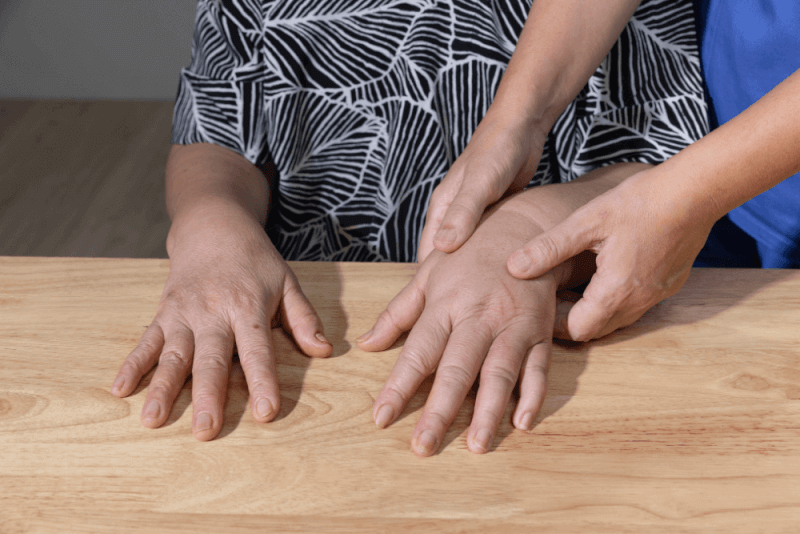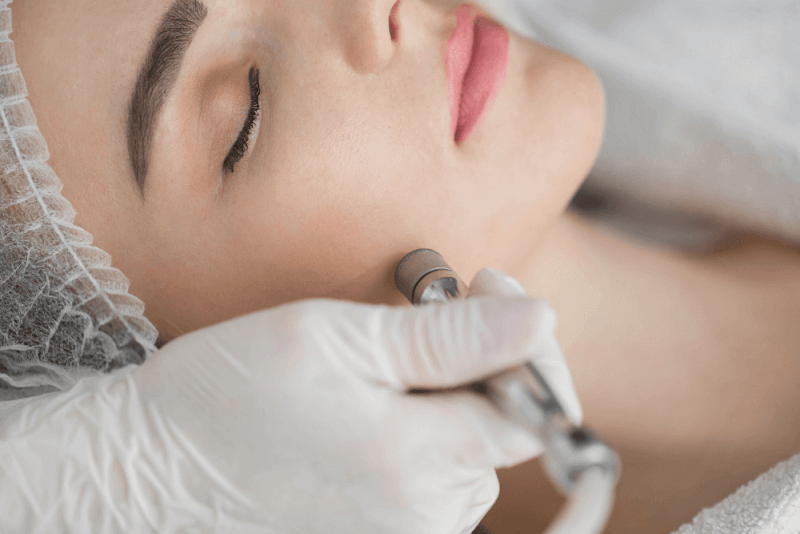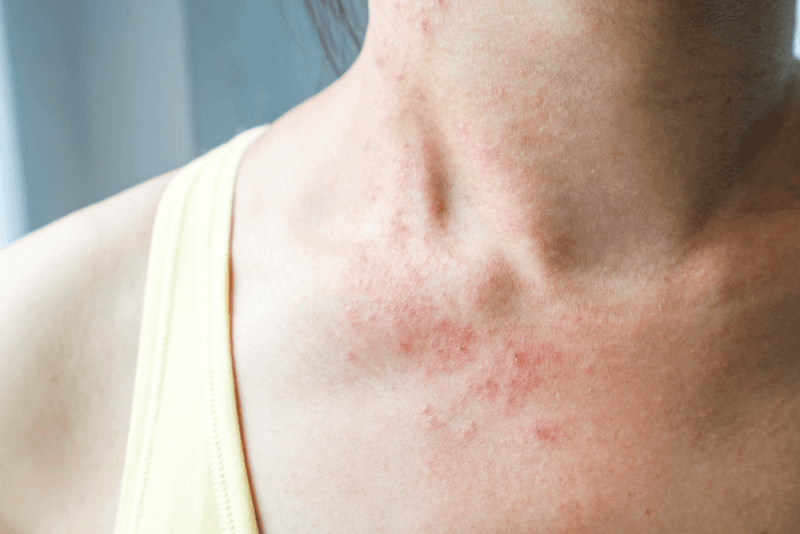30 Second Summary
- Rash is a skin condition that occurs when the skin is exposed to hot and humid environments.
- A rash can cause redness, swelling and blisters on the skin.
- Rash is usually more common in infants and children.
- The rash usually goes away on its own, but severe cases may require medical intervention.
What isrash (Miliaria)?
Although it is usually associated with babies, rash is a skin disease that can be seen in people of all ages. Rash, which is usually seen in the summer months when the temperature and humidity are high, is one of the common skin diseases in the society.
Miliaria also called rash, causes pink or red bumps on the skin. Although similar to the symptoms of a rash, rash is not a disease to worry about. In addition to being generally seen on the shoulders, back, arms, chest, legs and abdomen, it is especially concentrated in the curved parts of the body.
Rash is caused by the body's reaction by sweating when the external environment is too hot and humid. Since both sweat and external factors cause clogging of the pores on the skin, there is also a closure of the sweat ducts. This cycle causes the rash to develop.
The reason why babies and children have rashes more often than adults is that their sweat glands are underdeveloped and their skin pores are smaller. In addition, the fact that parents do not dress babies and children in accordance with the temperature is among the main reasons why diarrhea is more common in babies and children.
The main cause of diaper rash in adults is excessive sweating but not enough showering. In addition, women not changing their pads frequently enough during menstrual periods and not using cotton underwear are among the main causes of diaper rash in adults.
Diagnostic methods for rash (Miliaria)
No special tests are needed to diagnose rash. Rash, which is usually characterized by its appearance, can be diagnosed by physical examination by physicians. In addition, doctors may order tests to rule out other diseases.
Causes ofRash (Miliaria)
Rash is more common especially in people with fair skin color. In addition, the following are among the causes of diaper rash.
- Sweating due to heat
- Febrile illnesses
- Babies have sensitive skin
- Dressing babies and children too thickly
- Tight and synthetic clothing
- Not changing diapers frequently enough
How to prevent a rash?
Although diaper rash is a condition that usually does not require treatment and resolves spontaneously within 3 to 4 days, it can be especially disturbing in infants and children. For this reason, its prevention, especially during the hot summer months, makes children more comfortable.
Among the measures to be taken for rash are the following:
- It is especially important to keep the skin cold to prevent rashes. For this, it is necessary to shower regularly and use warm water during the shower.
- It is important that the products or cosmetics used in skin care are free from ingredients that cause clogging of the pores on the skin. If there are products with this feature, it is recommended not to use them in summer.
- As underwear, options made from natural fibers such as cotton should be evaluated. On hot days, tight and dark-colored clothes should be avoided. Otherwise, it becomes difficult for the skin to breathe and an environment is created for the rash to develop.
- Do not stay in hot and humid environments for long periods of time.
- Bedrooms need to be constantly ventilated.
- It should be ensured that the duvet covers are made of natural yarn. Sweating while sleeping should be prevented.
- Babies should not be overdressed.
- Diapers and clothes need to be changed frequently.
Symptoms ofrash (Miliaria)
Symptoms caused by rash are usually seen in the folded areas of the body and in areas where the skin comes into contact with clothing. In infants, the symptoms of diaper rash are seen on the inside of the legs, inside the elbows, armpits and neck. As there are different types of rash, the symptoms also vary. However, the most common rash symptoms include the following:
- Redness of the skin
- Small pimples on the skin
- Mild pain
- Burning sensation
- Blistering of the skin in the area where the rash occurs
- Mild itching
- Increased itching with sweating
- Stinging sensation
Care should be taken not to further irritate the area with rash. Otherwise, more serious symptoms may occur. In case of exacerbation of the clinical picture of rash, the following symptoms are observed.
- Itching
- Nausea
- Severe pain
- Fire
- Bleeding
Diaper rash in infants (miliaria)
Diaper rash in infants is usually mildly severe. The smaller pores of babies, as well as the fact that their sweat glands are not fully developed, often cause diaper rash. The main reasons why diaper rash is so common in babies are that they are dressed too thickly compared to the air temperature and their diapers are not changed at appropriate intervals.
Treatment of diaper rash in infants
There is usually no need to consult a doctor for the treatment of diaper rash in infants. With a few simple methods to be applied at home, diaper rash in babies can be relieved in a short time. These methods include the following:
- Cotton clothes should be worn.
- Diapers need to be changed frequently
- Skin irritation for any reason should be prevented.
- A warm shower should be provided.
- In case of itching, a cold compress can be applied.
If deemed necessary by physicians, creams that cool the body, do not clog the pores and maintain the moisture balance of the skin can be used.
Rash in children (miliaria)
The cause of diaper rash in children is similar to that of diaper rash in infants. It is often seen after febrile illnesses as well as hot and humid weather. It usually does not require medical intervention.
Treatment of rash in children
Before treating diaper rash in children, prevention of diaper rash should be given more importance. For this reason, cotton clothes should be given importance in children's clothes. It is also important to dress children in accordance with the air temperature. In addition, the following precautions should be taken for children with rashes.
- Avoiding direct sunlight
- Keeping children in a shady, cool and, if possible, air-conditioned place
- Regular warm showers
- It should not be dried with a towel after showering.
- In case of itching, a cold compress should be applied.
In case of exacerbation of symptoms, you should consult a doctor immediately.
Rash (Miliaria) treatment methods
Rash is usually a disease that goes away on its own. For this reason, medical intervention is usually not used. In rare cases, however, the rash can be infected by bacteria. In this case, itching and pustules appear.
Keeping the skin cool and clean is usually enough to treat a rash. In severe cases, topical treatment methods are used to reduce the severity of symptoms and relieve complications.
Home care for the treatment of rash
To make the rash heal faster, it is enough to pay attention to a few points of home care. These notes include the following:
- The first point to prioritize in terms of rash is to ensure that moisture is removed from the body. For this, cotton, loose and thin clothes should be used.
- Staying in an air-conditioned environment during the rash period will accelerate healing.
- People with rash should take cold showers regularly. Hygiene products that do not cause dry skin should be used during the shower. After showering, it should not be dried with a towel.
- If the skin irritated by the rash is itchy, cold compresses can be used to calm it down.
- During and after this process, products containing petroleum and mineral oils that cause clogging of the pores should not be used in skin care.
Natural solutions for the treatment of rash
There are also natural solutions that can help treat rash. Before using these natural remedies, consult a doctor and test a small area of the skin for irritation.
Tea tree
Tea tree is one of the natural solutions that are good for rash. First you need to mix the tea tree with a little water. It will be enough to apply it on the rashes that occur afterwards. It will help heal rashes and blisters. Tea tree is an oil suitable for adult use. For this reason, you should consult your doctor before using it in infants and children.
Magnesium oil
Another natural remedy that can help treat diaper rash is magnesium oil. Magnesium oil used especially in hot weather will make the skin look better in a short time.
Bentonite clay
Bentonite clay can be used to help the rash in babies go away in a shorter time. Bentonite clay, which provides skin regeneration, gives very efficient results in the treatment of rash.
Coconut oil
The use of coconut oil also has a positive effect on the relief of redness and itching caused by rash. In addition to being easily obtained at home, it will be sufficient to apply it regularly to the rash.
Shea butter
Shea butter, which is extremely rich in vitamins, is effective in relieving itching caused by diarrhea. It is especially recommended for use at the beginning and end of a rash. If it is used during the rash, it will help the rash to pass faster.
Turmeric
Ginger, which provides painless drying and healing of pimples and blisters on the skin, is also used in the treatment of rash. For this, it will be enough to mix turmeric with some water and apply it to the areas with rash.
Aloe vera
In addition to protecting the moisture balance of the skin, aloe vera, which provides rapid regeneration of skin cells, is one of the most effective methods used in the treatment of rash. It provides healing of redness, blisters and itching caused by rash in a short time.
Apple cider vinegar
Apple cider vinegar used in the treatment of adult rash is one of the most effective solutions. After mixing apple cider vinegar with some water, it is sufficient to apply it to the areas with rash with the help of cotton. Apple cider vinegar will prevent the formation of infection as well as support the formation of new cells, so it provides healing of the rash in a short time.
Olive Oil
It is sufficient to apply olive oil, which is suitable for use by people of all ages, directly to the skin for the treatment of rash. In addition, regular use of olive oil also protects the skin from rashes.
St. John's Wort oil
St. John's wort oil, which provides skin renewal and moisturizing, is also used in the treatment of rash. This oil, which is suitable for use from the first symptoms of rash, will also ensure that the rash will heal in a short time.
Types of rash
There are 4 different types of rash caused by the closure of sweat ducts.
Milaria crystallina
In milaria crystallina, a mild type of rash, there is a blockage of the pores in the epidermis, the upper surface of the skin. As a result of the superficial closure of the pores, the skin shows the presence of scaling with a diameter of 1 to 2 mm and the appearance of a water sac. Water bladders look like water balls or dewdrops and can burst easily. In addition, the water sacs are filled with clear liquid. This type of rash does not cause pain or itching and usually occurs in babies.
Miliaria rubra
In the miliaria rubra type, which is caused by blockage of the sweat glands at the bottom of the epidermis layer, small vesicles in pink tones close to red are seen on the skin. It is also possible to see vesicles as needle-tipped or conical papules. Usually seen on the arms and legs, miliaria rubra causes burning and itching.
Miliaria profunda
The most characteristic symptom of the miliaria profunda type, which is caused by blockage of the sweat glands located in the middle layer of the skin, is the stinging sensation. It causes the formation of swellings that are close to red in color, which cause discomfort to people and appear on the skin surface. A rare form of rash, miliaria profunda is more common in adults because it is usually caused by sweating during physical activity.
Miliaria pustulosa
This type of rash, accompanied by an inflammatory bacterial infection, causes the formation of pustules on the skin surface. It can manifest itself with pus-filled blisters or as pus filling under the skin.












